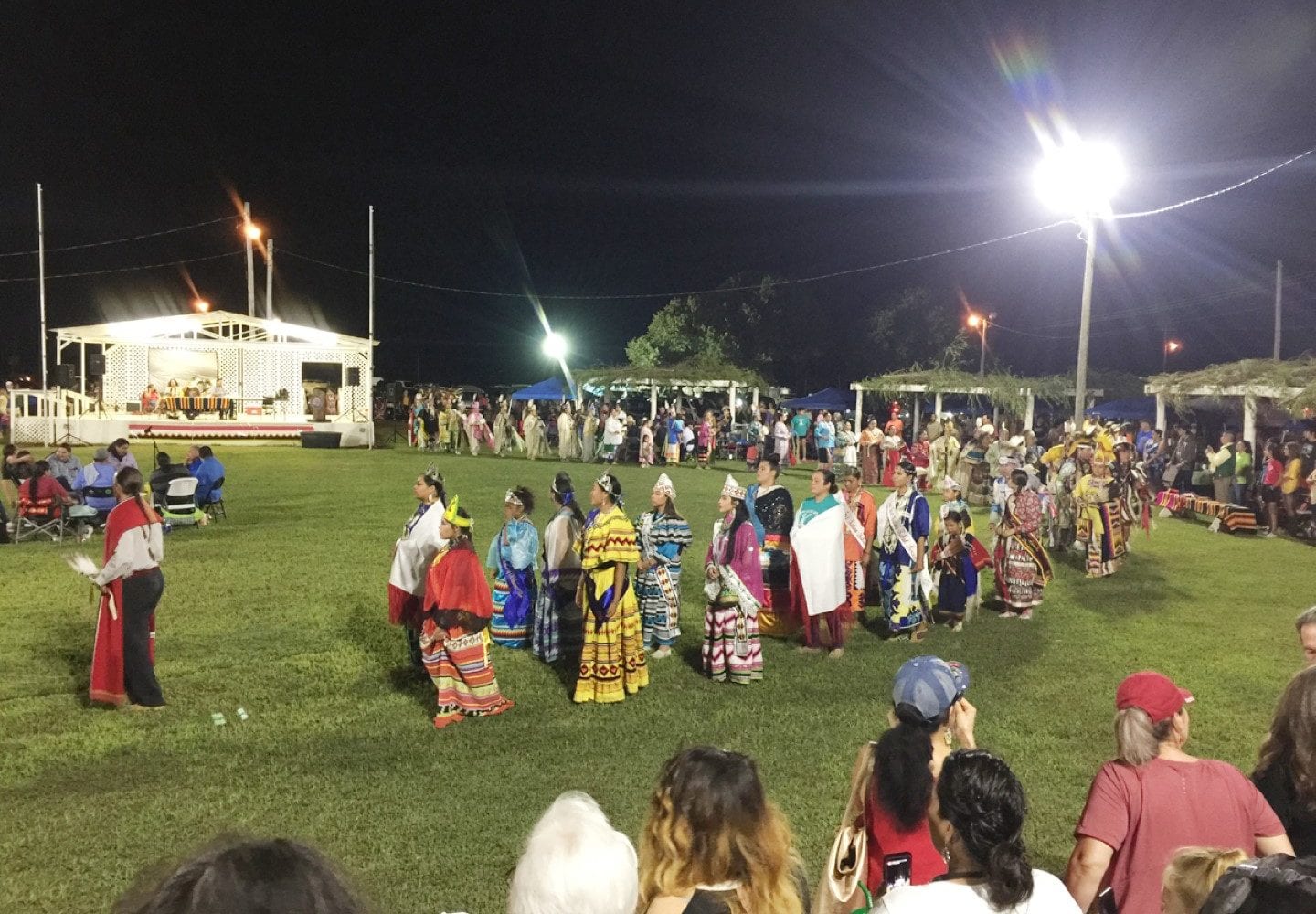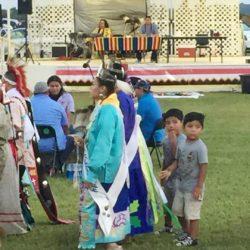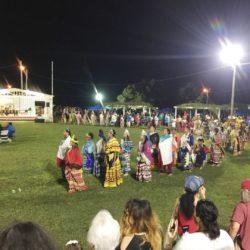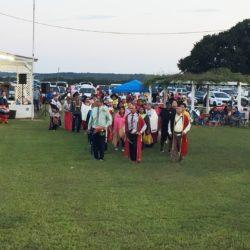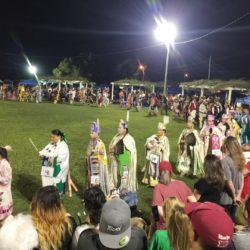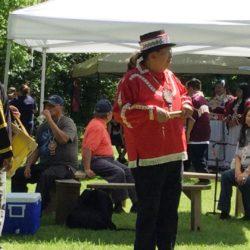by Ron Cook
I am still in a wheelchair and on crutches. Last Saturday, a friend and I attended a Colorado Intertribal Pow Wow in the Garden of the Gods near Colorado Springs. From the moment we pulled up to the main entrance, we were greeted with warmth, respect, and compassion. I thought this was just a nice expression of concern for an old disabled man, yet for the entire visit this was the permeating experience for not only myself, but for all who attended this afternoon of celebration.
The original Tribes of Louisiana can be traced back archaeologically for over 5,000 years. The original cultures were found in what is known as the Archaic Period; they were also known as Mound Builders. The Marksville culture then appeared about 2,000 years ago. The Natchez, as well as the Taensa native peoples, find the emergence of their ancestors at this time also. The Natchitoches people were the oldest culture found in Louisiana by the original Spanish and French settlers. According to a docent at the current Fort St. Jean Baptiste site, the earliest relationships between the French and the Natchitoches People were based on trade and commerce.
Louisiana is a great blending of ethnic, cultural and racial people. French, German, Spanish, Creole, Cajun, African-American and Native Americans have combined to create a state of truly American mixtures. The French had grand plans of nation building, but were interrupted by wars back in France, ceding the territory to Spain for a time. When France got Louisiana back, financial concerns thwarted the nation-building plans. France finally sold the huge Louisiana territory (from the Gulf to well within Canada … From the Rockies to the Alleghenies) to the United States, which then more than doubled the area of the new Republic.
The Natchitoches Tribe originally settled along what is known as the Cane section of the Red River. It is interesting to note that Natchitoches (originally spelled Natchitouches), under the French, was the first and largest settlement in Louisiana, until New Orleans was developed at the convergence of the Mississippi and Gulf of Mexico. According to the docent at the Fort, the People were moved into the Black Lake area, near Campti, to allow the Native Americans more “elbow room” for the Tribe, as well as the French settlement, and the Fort where trade was conducted. In Campti, each Native family was given a garden, as well as a Tribal garden space to grow crops. Campti is named after Chief Campti.
Many Native Natchitoches people still live in the Campti and Natchitoches areas, but they were hidden for many years. American history has moved Native Americans from one end of the country to another over the centuries. In 1835, there was a great effort to exterminate or move most Native Americans from their ancestral lands. After the Civil War, and right up into the late 1960’s Civil Rights Laws, Native Americans were treated with disdain and a lack of respect. Often, their children were removed from their homes and educated to be like European Americans learning English, while destroying the Native culture, ancestry and way of life.
Since the 1960’s, Native Americans have strived to recapture that which had been lost. Work with the local, state, and federal governments to pass protective legislation has helped. The Natchitoches People were only formally recognized as a legitimate People in 2017. Pow Wows are a form of cultural re-creation that helps Native Americans, and all Americans, to enjoy, promote and witness a time gone by … placing it in its rightful place of respect and honor.
The Second Annual Natchitoches Tribe of Louisiana Pow Wow is going to be held on November 8th and 9th at the Fort Saint Jean Baptiste State Historic Site in the City of Natchitoches. Come and spend time in the peaceful, colorful, dignity of a Pow Wow. It was good for my soul.
Following is more information from the www.natchitochestribe.org website:
~The Theme of this year’s Pow Wow is:
“Our Roots Run Deep”
~The Goal:
To share the People of the Natchitoches Tribe and their Louisiana Heritage and Cultural impact of the Past and Present to the area. Embracing the Tribe’s Natchitoches name from which the City of Natchitoches got its named.
~ Dates:
November 7, 2019: Prep and Set up
November 8: Crafters and Vendor Check- in and Volunteer Assignment, Gathering of the People Social Event 6-9
November 9: 7-10 am, Crafters and Vendors Finishes touches of Booths and Displays
10:00 Gates Open to the Public
11:00 Grand Entry and Opening Ceremony
12:00 Men’s Dancers
1:00- Drummers
2:00 Lady’s Dance
3:00 Flute and/or Singers
4:00 Awards for Dancers
5:00 Closing Ceremony.
November 10: Clean Up and Tear Down 10:00 till 4:00
~Location:
Fort St. Jean Baptiste State Historic Site will be the Hosting Sight of the NTL Pow Wow.
This event will have Cultural Activities for Children in an assigned, fenced area of the Fort with Native American Storytelling, Artifact Dig, Indigenous Face Painting, and Feather Decoration for Head Bands to show they have earned their first Feather for attending the event.
Native American Made Arts and Crafts will be on display for viewing and sale.
Local Foods indicative of the Culture of the Region will be made available for purchase.
The Pow Wow is an Event in which Indigenous Native Peoples of the United States of American Share and Celebrate their Culture and Heritage with Song and Dance.
Please note that times for specific events are currently tentative and subject to change!!!!!
Brief Definition of a Pow Wow:
A Pow Wow (also Powwow or Pow-Wow) is a social gathering held by many different Native American communities.
A modern Pow Wow is a specific type of event for Native American people to meet and dance, sing, socialize and honor their cultures.
Pow Wow etiquette is required …
Such as rules for when photography is or is not acceptable, protocol for the Grand Entry, and so on.
A few guidelines are common: clothing worn by participants is known as “regalia” and not to be called a “costume.”
Some rules are for common sense courtesy: drums have special rules and should not be touched or played by those not a part of the drum group.
People and their regalia should not be touched without permission.
Photographs are also a big part of Pow Wow etiquette.
Depending on the reservation and ceremony, viewers should ask before taking photographs or recording videos or tapes.
Some tribes, such as the Pascua, Yaqui, and Hopi ban photos and sketches of ceremonies and their Pow Wows may be private or public.
There is generally a dancing competition, with many different types of traditional dances, music and regalia, often with significant prize money awarded.
Pow Wows vary in length from a one-day event, to major Pow Wows called for a special occasion which can be up to one week long.










